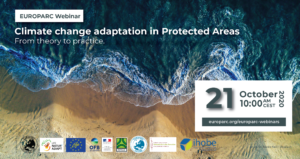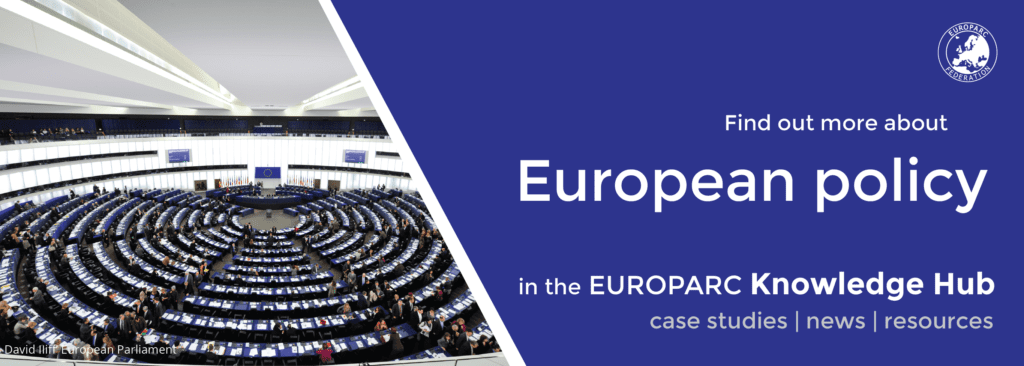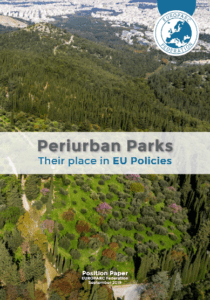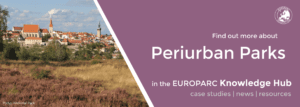Helping Protected Areas adapt to climate change: Workshop outcomes
Source: Presentation by Véronique Lebourgeois
During the ONLINE Conference 2020, EUROPARC held 8 thematic workshops to discuss diverse topics related to practice and capacity building in Protected Areas. In case you have not attended, or want to remind yourself of their outcomes, a series of articles summarises the content of some of these workshops.
Experience from 5 French nature reserves
In the Conference Workshop on Climate Change: how can Protected Areas adapt to climate change?, 5 nature reserves shared the experience they gained during the LIFE Natur’Adapt project on climate change adaptation. Each site has been testing and adapting a shared framework methodology to integrate climate change into their planning practice.
Each project manager shared one single key learning that they felt was important for Protected Area managers who are starting to look at this specific challenge.
Concisely, integrating climate change in Protected Area management practices often calls for:
- further accepting uncertainty as a given factor when planning
- bridging global climate change trends with local specificities
- developing systemic large-scale conservation as climate change is affecting the very conditions of life as well as major natural cycles such as water, carbon, soil erosion,… In other words, Nature knows no borders. Protected areas are affected by their surroundings and the other way around.
- Involving communities from the early stages of the planning exercise to co-design win-win solutions in and out of the area.
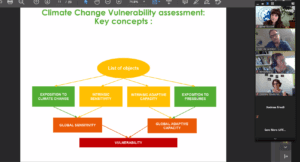
These examples show that climate change is yet another pressure on already fragile ecosystems that managers need to take into account. It adds complexity and uncertainty as well as new competencies. In parallel, let us not miss that climate change offers a common ground to work together with stakeholders and improve the implementation of nature conservation measures in and around Protected Areas.
For more information, please do not hesitate to contact Olivier de Sadeleer, Project Manager at EUROPARC Federation or to download the workshop presentations below.
Download the presentations
Element of context, LIFE Natur’Adapt’s experiment and prototype methodology – download. Olivier de Sadeleer, Project Manager – LIFE Natur’Adapt, Climate Change Adaptation, EUROPARC.
Integrating climate change into protected area management practices – Key learnings from 5 nature reserves in France:
- Véronique Lebourgeois, Parc naturel régional du Morvan – Réserve naturelle des Tourbières du Morvan, France – download
- Iris Lochon, Syndicat mixte du Parc naturel régional des Volcans d’Auvergne – Réserve de Chastreix-Sancy, France – download
- Juliette Dané, Asters, Conservatoire des espaces naturels de Haute-Savoie – Réserve de Sixt-Passy, France – download
- Emilien Bastian, LPO – Réserve de Lilleau des Niges, France – download
- Kenzo Héas, Fédération des réserves naturelles catalanes- Réserve de la Massane, France – download
Want to learn more about climate change? Join our webinar on the 21st of October.
or check our Knowledge Hub:
[WEBINAR] Climate change adaptation in Protected Areas
This EUROPARC webinar on the 21st of October at 10 AM CET will look at climate change adaptation in Protected Areas – From theory to practice.
- Wednesday, 21st of October 2020
- 10:00 AM CEST
- participation is free but registration is needed. Register here.
Through case studies from Spain and England, this webinar, organised in the context of Natur’Adapt will go through important learnings on the process and practice of planning for climate change adaptation in protected areas.
Case studies by:

Ainhize Butron, IHOBE – Climate is changing. Why are we not acting?
Protected areas are at a crossroad due to climate change. A myriad of studies and researches have been published over recent years underlying the paramount importance of adaptation. Yet, we are still not acting. Why? The point of no return is approaching and protected areas may be put into jeopardy.
Although climate and biodiversity crisis are different, their solutions overlap. Biodiversity managers may see it as an opportunity to put biodiversity’s contribution to the development of sustainable societies higher on the political agenda. Let us talk about messages.

José Antonio Atauri, EUROPARC-Spain/FUNGOBE – A pilot case in a Mediterranean protected landscape
Although the effects of climate change are already evident, it is rarely addressed in protected area management plans, largely due to the lack of methodologies and clear management criteria. The procedure for considering adaptation to climate change in the process of drafting the management plan for the protected landscape of Sierra de Santo Domingo (Zaragoza) is presented. Its main interest is due to its high vulnerability, as it is a transition zone between bioclimatic zones.

Simon Duffield, ENCA / Natural England – Assessment of evidences in 60+ reserves in England
National Nature Reserves (NNRs) form part of a wider UK network of protected areas and include some of the best examples of England’s wildlife. Natural England developed a methodology to embed climate change adaptation into the long term vision and management of the NNRs they manage. The approach combines the latest scientific information on projected climate change and the likely impact on the natural environment with on the ground detailed knowledge of the state and vulnerability of the key features of the reserves. The methodology takes site managers through four steps (projected change – impacts – vulnerability – response) to enable them to identify appropriate adaptation for their reserves without the need for assistance from climate change specialists.
Workshop leader:

Olivier de Sadeleer is a project manager for the EUROPARC Federation. He represents the “voice” of European Protected Areas in the LIFE project ‘Natur’Adapt’. Holding an MA in cultural anthropology, Olivier brings his passion for wilderness and long-standing experience in business development & communication (incl. digital) to help increase the impact of EUROPARC.
All participants will have the opportunity to discus and/or ask questions
This webinar is organised by the EUROPARC Federation with the support of ENCA, IHOBE and FUNGOBE in the framework of the LIFE Natur’Adapt project. LIFE Natur’Adapt [LIFE17 CCA/FR/000089] NaturAdapt is a 5-year project developed with the support of the LIFE Program, Office Français de la Biodiversité and Ministère français de la Transition Ecologique et Solidaire

EUROPARC’s Position on the EU Targets for Protected Areas
Parc naturel régional de Brière (FR) © Photo Jean Pierre Saliou
The new EU 2030 Biodiversity Strategy sets ambitious goals to stop biodiversity loss and bring nature back into our lives. Find here EUROPARC’s Position Paper on the EU targets for Protected Areas, developed with 17 other members of the European Habitat Forum (EHF).
Towards the implementation of the EU 2030 Protected Area Targets
We are pleased to share here the position paper we recently adopted on the EU targets for Protected Areas, contained in the 2030 EU Biodiversity Strategy.
EUROPARC very much welcomes the high level of ambition contained in the EU Strategy, but an effort is now needed to ensure its effective implementation.
A series of questions come up as soon as we start looking at the document from a practical perspective:
- What priority measures to improve management effectiveness of the existing protected areas?
- Targeting to protect 30% of EU land and sea, which areas should be taken into account?
- What role for Natura 2000 areas?
- Which criteria to define strict protection?
With this document we therefore propose, to the European Commission and Member States, a series of recommendations, criteria and priorities to interpret the Protected Areas’ targets and pave the way towards their implementation.
EUROPARC and other members of the European Habitat Forum urge that:
- Management effectiveness of Protected Areas needs to be improved.
- The actual protection of existing and new Protected Areas needs to be prioritized.
- At least 30% of EU’s land AND see area needs to be legally protected
- Ecological corridors need to be integrated to ensure a true Trans-European Network
- At least a third of EU’s Protected Areas need to be strictly protected
- The efforts need to be shared across Member States
The position paper illustrates what must be done to reach the Protected Area targets at both national and biographical level.
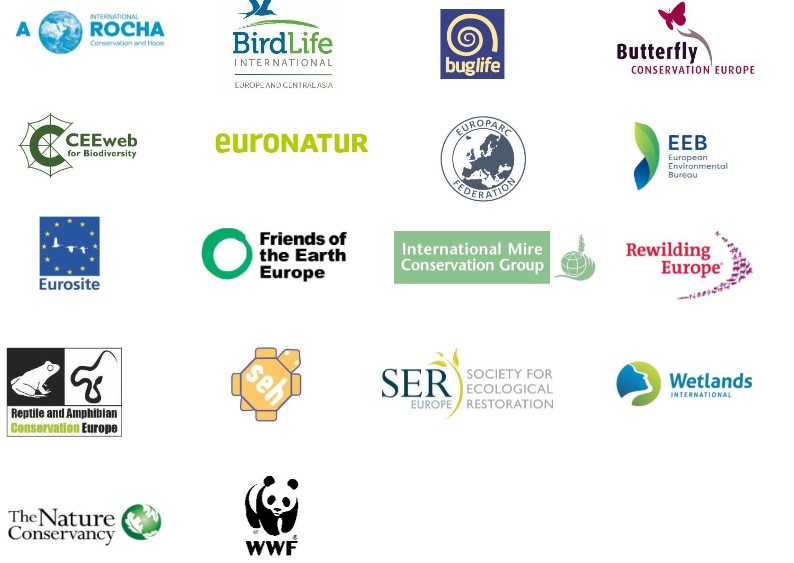
All contributing organisations
This position paper was developed in partnership and through a constructive dialogue with many other major environmental organisations from across Europe. We are keen to hear also your views and any further inputs you might have.
Please feel free to share thoughts and reflections, writing to Federico.minozzi@europarc.org
2022: The Year of Greener Cities
Collserola Park, Barbara Pais.
Because of the impact of urban areas on the environment, the European Parliament has decided that 2022 will be the ‘year of Greener Cities’. This brings a lot of opportunities for, among others, Periurban Parks.
On the 17th of September, the European Parliament proposed that the year 2022 will be the ‘European Year of Greener Cities’. The aim is to make urban environments greener and to increase awareness on the benefits of green spaces in an urban environment. These not only include environmental benefits but also benefits linked to health, culture and education. The European Year of Greener Cities will also explicitly focus on topics such as green infrastructure and greener public procurement. The European Parliament has stated that Involving cities is paramount for reaching the targets of the Biodiversity Strategy for 2030.
Greening cities involves more than just implementing initiatives to make cities more verdant given the importance of clean air, water, soil and a cityscape that promotes biodiversity for ensuring the sustainability of verdant spaces.
Protected Areas are not explicitly mentioned in the proposal of the European Parliament, which is unfortunate because Periurban Parks highly contribute to the above mentioned ambitions. Therefore, it is key to convince the European Parliament of the importance of involving Periurban Parks in the specific plans that will be developed from this announcement.
The EUROPARC Federation produced a position paper on Periurban Parks and their relevance not only for nature and biodiversity but also climate mitigation, agriculture, health, culture and education. This position paper calls upon cities to be actively involved in the protection of valuable nature in their vicinity and so derive the many benefits Periurban Parks can bring. And there is more to come: On the 4th of December, we will have a webinar on Periurban Parks in which we will present a Toolkit with practical tips for Planning, Designing and Managing Periurban Parks.
The EUROPARC Federation recognizes the importance of Periurban Parks to ensure a healthy and green future for Europe. This is why we are incredibly happy that Fedenatur took the courageous decision to close their organisation and join efforts with EUROPARC three years ago. EUROPARC’s Periurban Commission carries on the legacy of Fedenatur. In this short time, our Periurban friends have complemented the work of EUROPARC, bringing new perspectives from the natural parks closest to cities.
